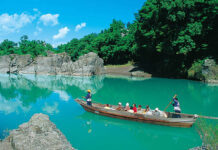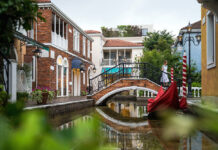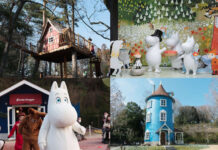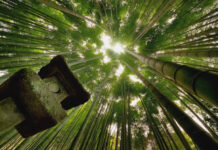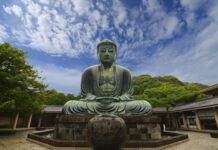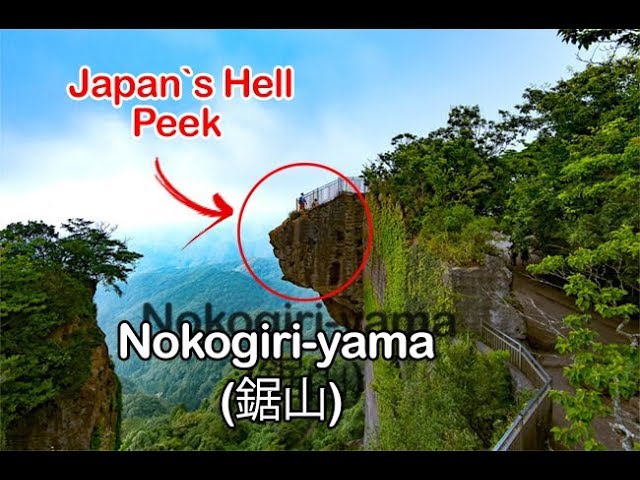
Mount Nokogiriyama (鋸山) is a 330-meter tall mountain along the western coast of the Boso Peninsula. Spread out along the slopes of the mountain is Nihonji Temple (日本寺), a Soto Zen Buddhist temple, which was commissioned about 1300 years ago, making it one of the oldest places of worship in the Kanto Region. The temple complex is extensive and consists of multiple areas. A network of walking paths connects the areas, and it takes over an hour to explore them all.
Hundred-shaku Kannon (百尺観音, Hyaku-shaku Kannon)

Towards the top of the mountain stands a 30-meter tall Hyaku-Shaku Kannon, depicting the Buddhist Goddess of Mercy. Carved in 1966 into a stone cliff, it is dedicated to those who died in wars, of sickness or in accidents. The Kannon is also worshiped as a protector of transportation due to its protected location surrounded by rocks.
“View of Hell” (地獄のぞき, Jigoku Nozoki)
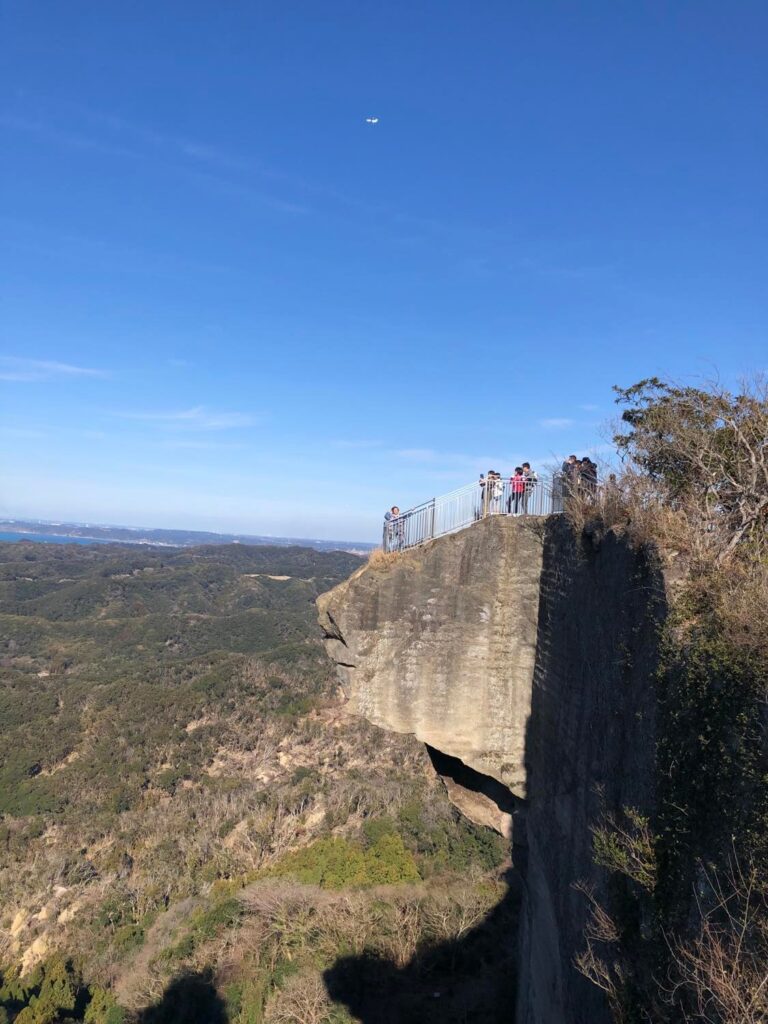
At the peak of the mountain are a couple of viewpoints, including the “Jigoku Nozoki” (Hell Lookout), offering views from a rock jutting off of a sheer cliff. From the peak, you can enjoy views of the Boso Peninsula and Tokyo Bay, and see Mount Fuji and the Tokyo Skytree on clear days.
Nihonji Daibutsu (Yakushi Nyorai) (日本寺大仏, Nihon-ji Daibutsu)
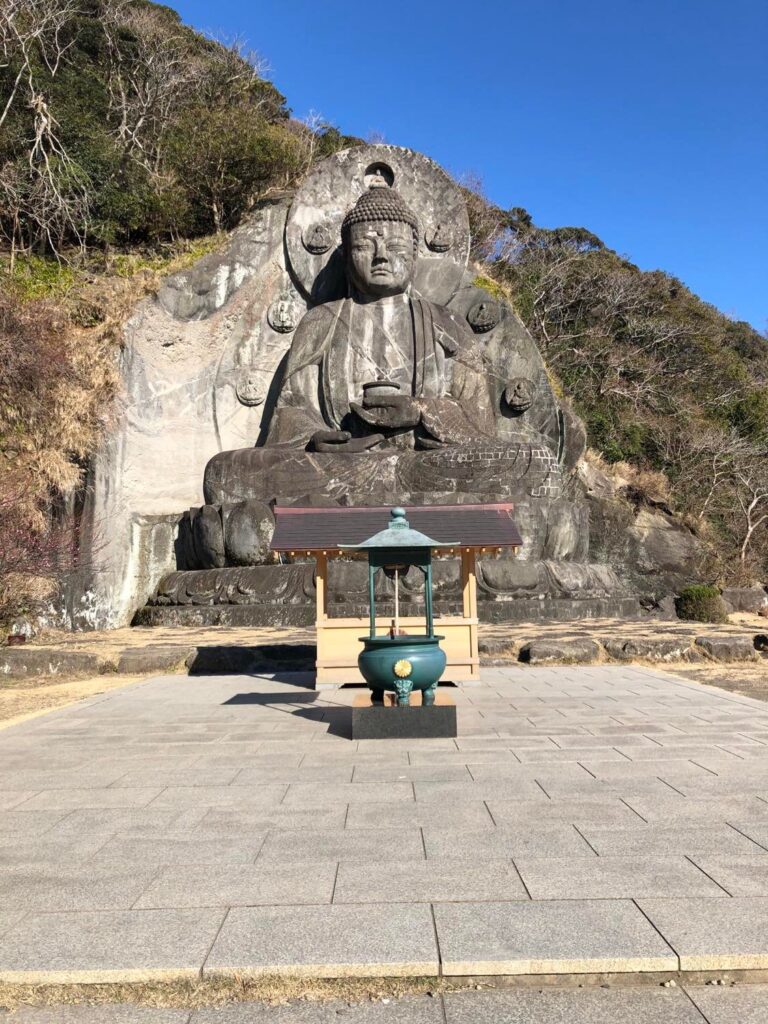
There are various entry points into the temple grounds. The regular approach starts at the bottom of the mountain; however, most people enter further up via parking areas or by ropeway as most of the temple’s main attractions are located at higher altitudes. The temple’s main attraction, a 31 meter tall Daibutsu (Big Buddha), stands midway up the mountain. The Daibutsu is a stone statue depicting the Yakushi Buddha which was carved here over three years from 1780.
1,500 Arhat (千五百羅漢, Sen-Gohyaku Rakan)
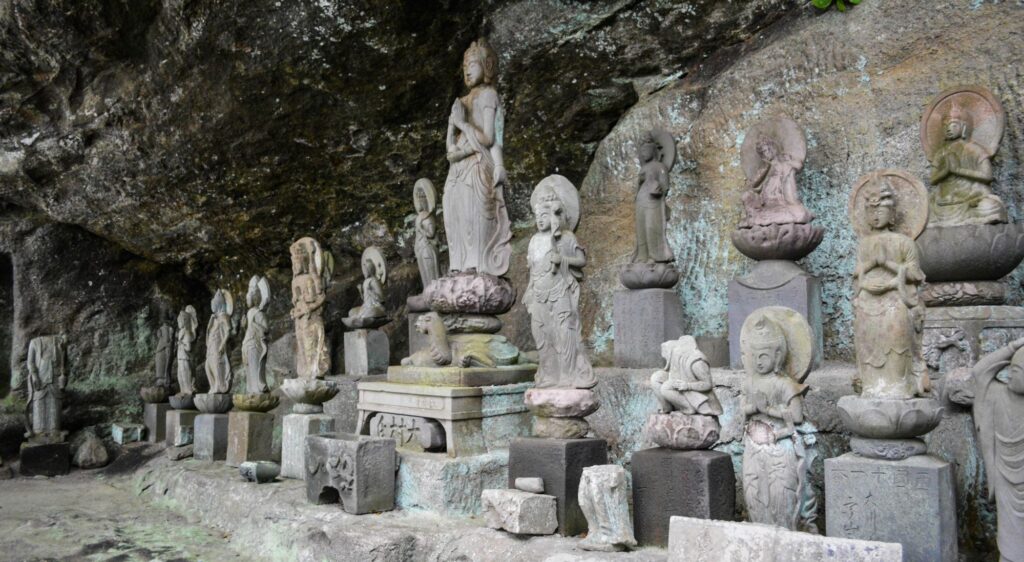
Lining the walking paths further up the mountain are 1500 statues of Buddhist disciples (rakan), carved out of stone over 20 years by the same master artisan who created the Daibutsu. These smaller statues can be found in various nooks around the mountain, in different poses and positions. Unfortunately, many of them were beheaded during the short anti-Buddhist movement that accompanied the Meiji Restoration, but there are ongoing efforts to repair them.

